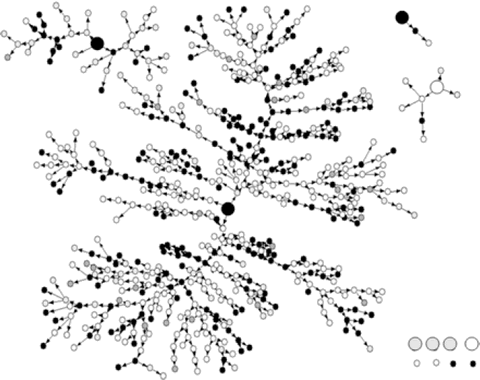Questioning the evidence of influence in social networks
 Subscribe to Decision Science News by Email (one email per week, easy unsubscribe)
Subscribe to Decision Science News by Email (one email per week, easy unsubscribe)
TWO RECENT ARTICLES THAT QUESTION ACCOUNTS OF INFLUENCE IN SOCIAL NETWORKS
UPDATE: Two months after this was published here in DSN, the New York Times ran this article on the same topic.
In a short span of time, two articles have emerged that question some notable claims of influence in social networks. This does seem important, so we list them here.
ARTICLE ONE
Citation: Shalizi, C. R., & Thomas, A. C. (2011). Homophily and Contagion Are Generically Confounded in Observational Social Network Studies. Sociological Methods Research, 40(2), 211-239
Link: http://smr.sagepub.com/content/40/2/211.full.pdf+html
Abstract: The authors consider processes on social networks that can potentially involve three factors: homophily, or the formation of social ties due to matching individual traits; social contagion, also known as social influence; and the causal effect of an individual’s covariates on his or her behavior or other measurable responses. The authors show that generically, all of these are confounded with each other. Distinguishing them from one another requires strong assumptions on the parametrization of the social process or on the adequacy of the covariates used (or both). In particular the authors demonstrate, with simple examples, that asymmetries in regression coefficients cannot identify causal effects and that very simple models of imitation (a form of social contagion) can produce substantial correlations between an individual’s enduring traits and his or her choices, even when there is no intrinsic affinity between them. The authors also suggest some possible constructive responses to these results.
ARTICLE TWO
Citation: Lyons, Russell (2011) The Spread of Evidence-Poor Medicine via Flawed Social-Network Analysis, Statistics, Politics, and Policy, 2(1)
Link: http://www.bepress.com/spp/vol2/iss1/2
Abstract: The chronic widespread misuse of statistics is usually inadvertent, not intentional. We find cautionary examples in a series of recent papers by Christakis and Fowler that advance statistical arguments for the transmission via social networks of various personal characteristics, including obesity, smoking cessation, happiness, and loneliness. Those papers also assert that such influence extends to three degrees of separation in social networks. We shall show that these conclusions do not follow from Christakis and Fowler’s statistical analyses. In fact, their studies even provide some evidence against the existence of such transmission. The errors that we expose arose, in part, because the assumptions behind the statistical procedures used were insufficiently examined, not only by the authors, but also by the reviewers. Our examples are instructive because the practitioners are highly reputed, their results have received enormous popular attention, and the journals that published their studies are among the most respected in the world. An educational bonus emerges from the difficulty we report in getting our critique published. We discuss the relevance of this episode to understanding statistical literacy and the role of scientific review, as well as to reforming statistics education.


